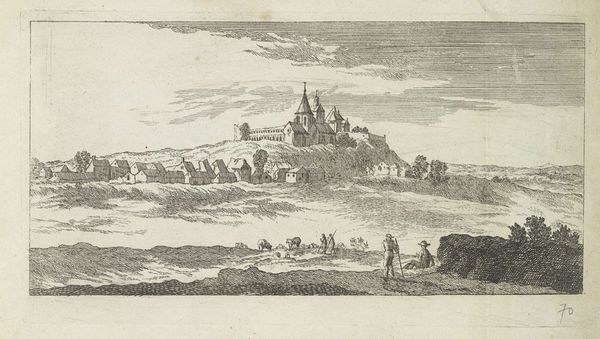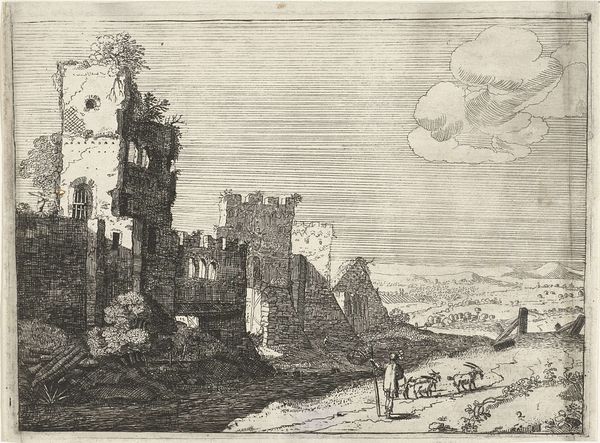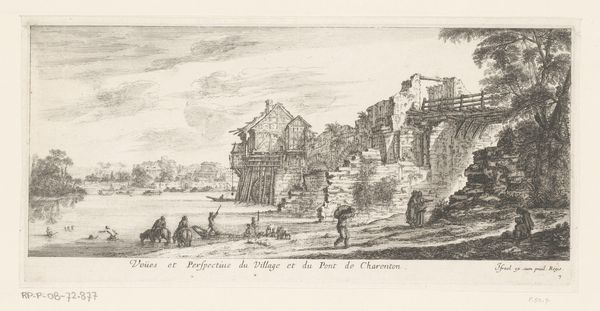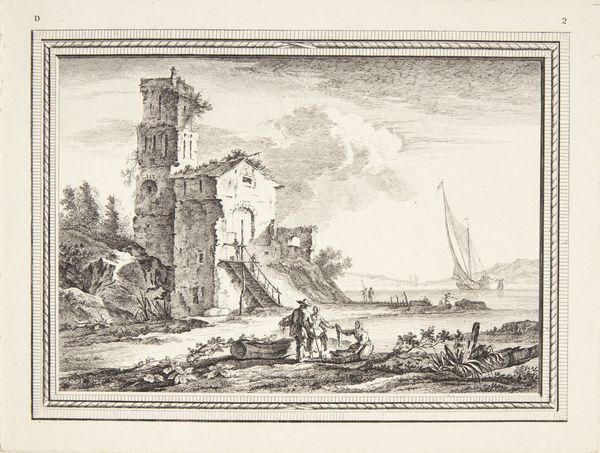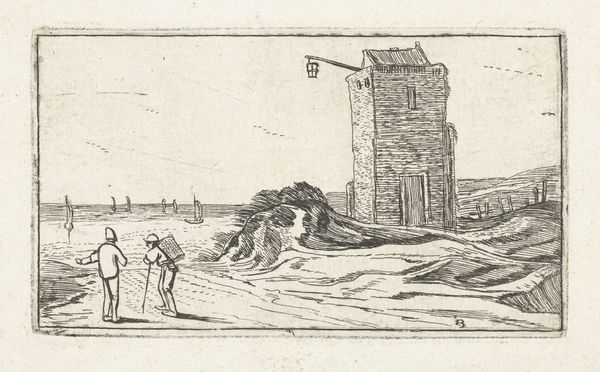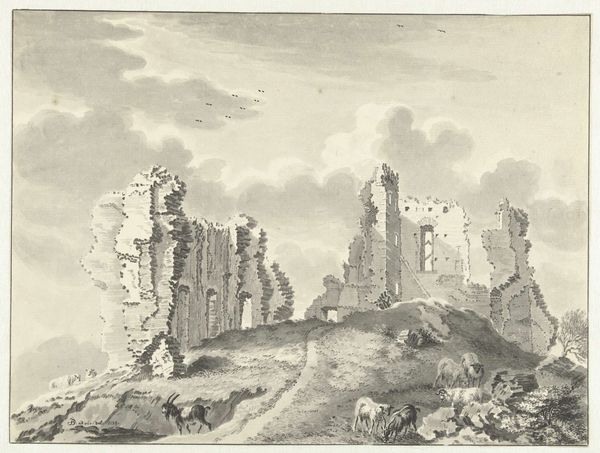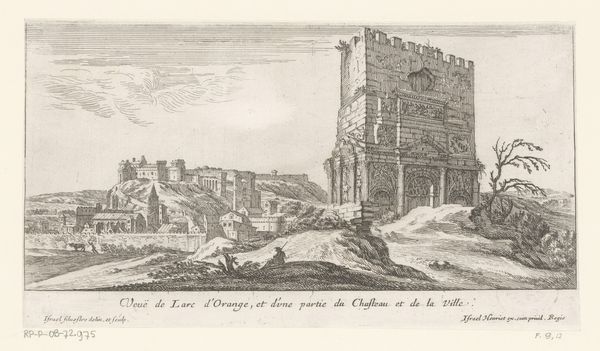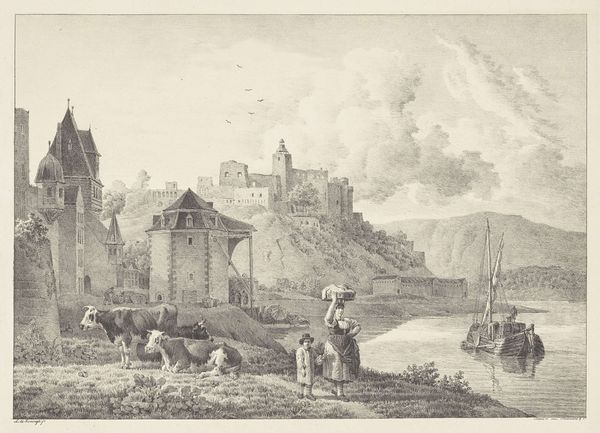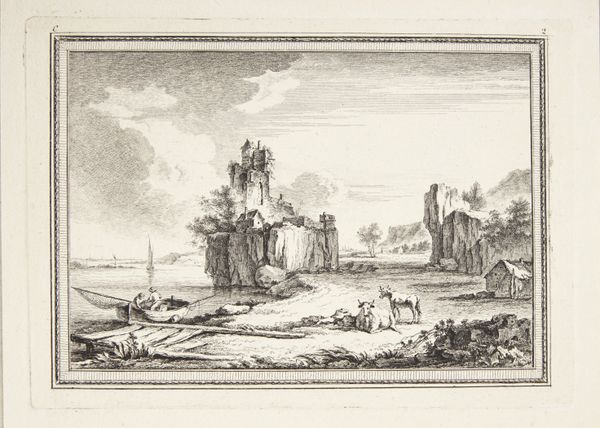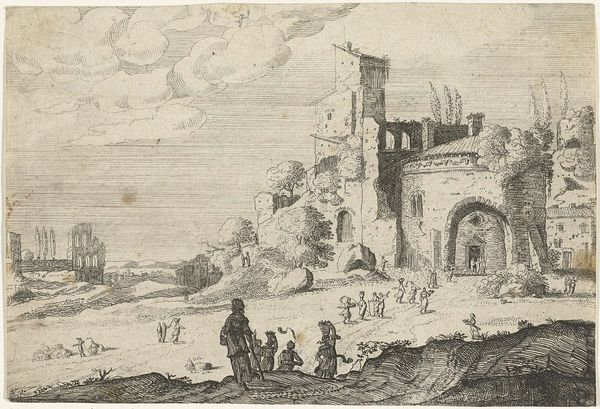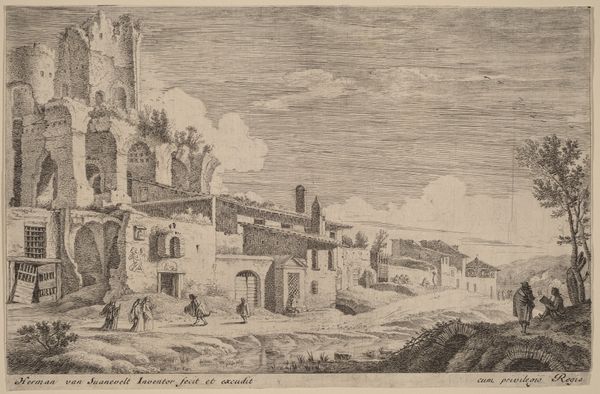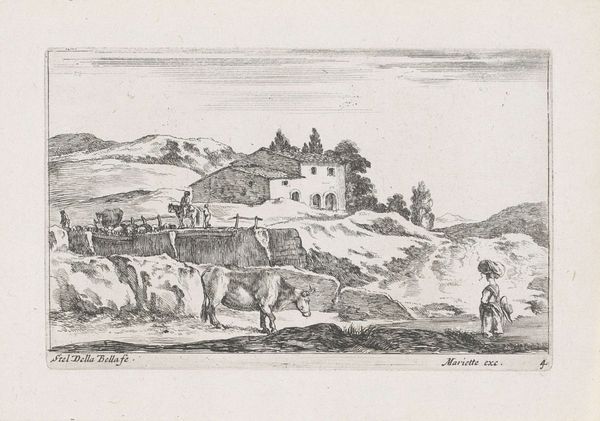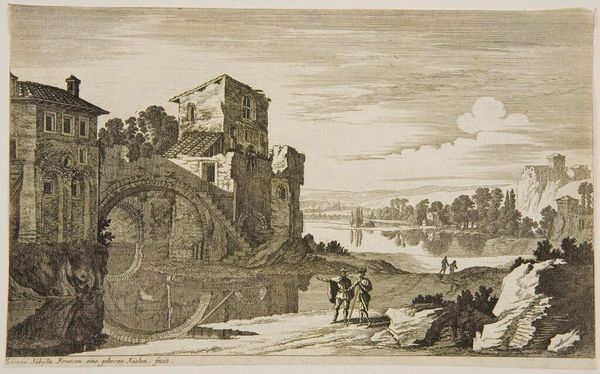
drawing, print, engraving
#
drawing
#
baroque
# print
#
pencil sketch
#
landscape
#
line
#
engraving
#
realism
Dimensions: height 111 mm, width 206 mm
Copyright: Rijks Museum: Open Domain
Curator: Here we have an engraving from the Rijksmuseum collection entitled "Landschap met ruïne," or "Landscape with Ruin." It's attributed to an anonymous artist, and its creation is dated somewhat broadly, anywhere between 1600 and 1833. Editor: The ruin certainly sets a melancholic tone, doesn't it? The crisp line work of the engraving actually enhances the feeling of desolation, even with those figures in the foreground. It's a reminder of the transience of even the grandest constructions. Curator: Yes, there is a real starkness in the scene. I'm drawn to the details of how that starkness was achieved. Look closely at the lines, the way the engraver varies the weight to create texture and depth on the stonework of that prominent, rounded ruin. It indicates considerable skill, using tools and methods that had been practiced and refined for centuries. The material of the copper plate and the tools used leave their own distinct mark. Editor: The ruin really is central to the composition, rising up on that gentle hillock. Its rounded form, and even the way it seems to partially echo the shape of the clouds, speaks of enduring power even in decay. And the other architectural features dotted about—the more angular building, and that odd spire on the right—add to this feeling of past grandeur. Do you feel it speaks of vanitas, that symbolic meditation on the futility of earthly life and its pleasures? Curator: Interesting that you pick up on the vanitas symbolism. My attention, though, shifts toward the less romantic aspects. How the act of printmaking allows for this scene to be easily replicated, disseminated, possessed, perhaps by merchants or landlords as reminders of both past wealth and the raw materials still at their disposal. Consider the socio-economic realities intertwined with even a melancholic ruin. Editor: Yes, the economics of its production and distribution are undeniably important. But let’s not overlook how this relatively inexpensive image could bring a taste of high culture to a wider audience, allowing them to participate in shared symbolic landscapes, histories, and feelings about mortality, all carried in these distinct visual symbols. Curator: I suppose when we pull back a bit, we are both grappling with different sides of how materials and symbols are inextricably intertwined in a piece like this, from its creation, to distribution, and now its presence here in the museum collection. Editor: Absolutely, seeing its symbolic depth contextualized alongside material and making reveals its full potential.
Comments
No comments
Be the first to comment and join the conversation on the ultimate creative platform.
